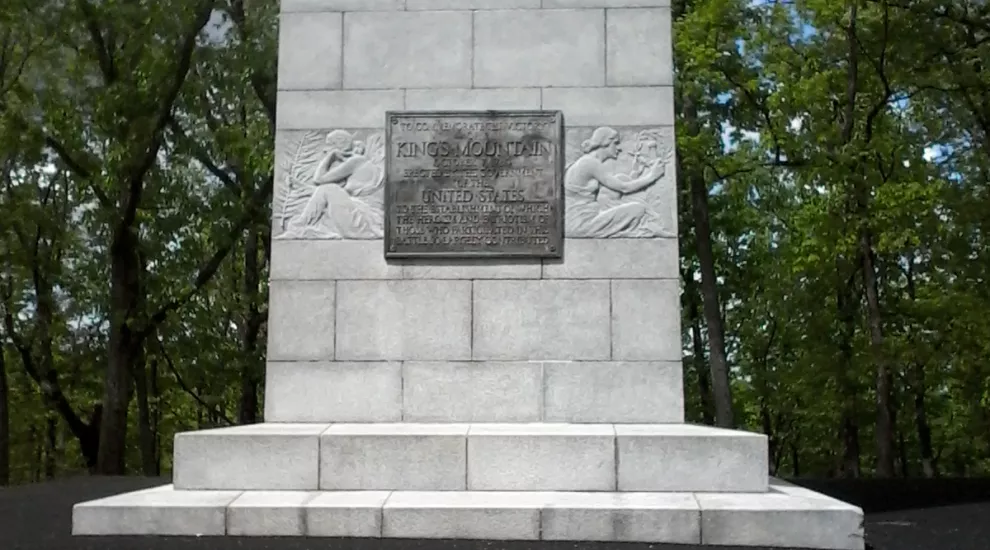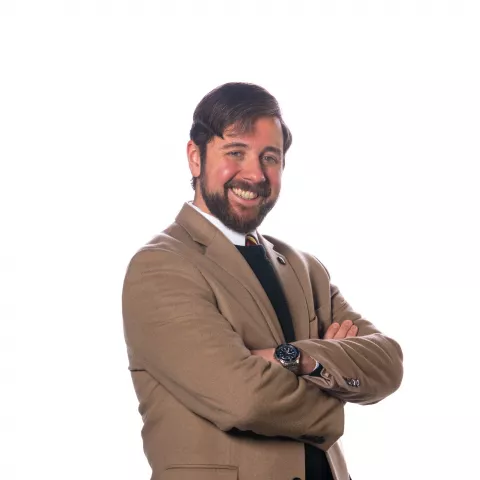
The final stop on the SC ETV Endowment's Southern Campaign Tour was Kings Mountain National Battlefield. Kings Mountain is a rocky, wooded hill on the border of North and South Carolina. This site also played host to several U.S. Presidents: President Herbert Hoover spoke there at the 150th anniversary of the battle, and President Jimmy Carter visited in 2011.
This battle is especially known for its involvment of militia troops; both Whig (Patriot) and Loyalists. No continental or "regular" soldiers participated in this battle, for the Patriot forces were comprised entirely by militia. The "Overmountain Men" were American frontiersmen who lived West of the Appalachian Mountains, and fought in the Revolutionary War. These men were mainly Scotch-Irish, Welsh, French, or German settlers. They were hearty and tough folk, since they lived in the back woods areas of the Appalachians. American militia came from various parts of the region to fight in this battle: South Carolinians, North Carolinians, and even some Georgians participated. The 'Overmountain' settlers had no love for the British, and were in violation of the British proclamation that territories West of the Appalachians would be reserved for Native Americans. British Major Patrick "Bulldog" Ferguson, a fellow Scots-man, threatened to lay waste to the 'Overmountain' communities. Of course, the rebel colonists did not take too kindly to the threats made against their homes and families.
On October 7, 1780, a thousand Patriots surrounded and attacked the British troops and loyalist soldiers. The British attempted to hold their ground on top of the hill using standard combat tactics, but were no match for the militia which completely surrounded the hill. The Patriots' guerrilla style warfare, which they learned from previous engagements fighting Native Americans, completely trumped the British. The battle resulted in a defeat for the British, and was a crucial, much needed victory for the Patriots. Major Patrick Ferguson fell during the battle; having been shot while riding his horse. To this day, many historians debate whether or not Maj. Ferguson was attempting to flee, or if he was trying to rally his men.
Today, the park is a nationally recognized battlefield, and features monuments dedicated to those who fought in the battle. Dr. Walter Edgar led the group around the park, explaining where significant events during the battle took place, along with the importance of the monuments there. A marker for Major Ferguson's grave was erected there in 1920, and as part of a South Carolina tradition, a large pile of rocks can be seen behind the grave. Countless visitors over the years have stopped by Ferguson's grave to add to the rock-pile, in response to Ferguson's notoriety.
The members of the Southern Campaign tour group expressed sentiment, saying that the tours were fun and educational. Some members of the group had ancestors who fought in one or more of these battles, and were appreciative of the opportunity to be able to connect on a deep, familial level. It meant something to be able to bear witness to that. For anyone interested in American history, and has not been to Cowpens, Ninety-Six, Historic Brattonsville, or Kings Mountain, I highly recommend paying these sites a visit. These battlefield locations represent a not widely known part of the American Revolution, and the mission of SCETV's "Southern Campaign" series is to bring these events to light. For "The American Revolution in the South...", Dr. Walter Edgar states, "began and ended in Charleston, but the war was fought in the back country."

